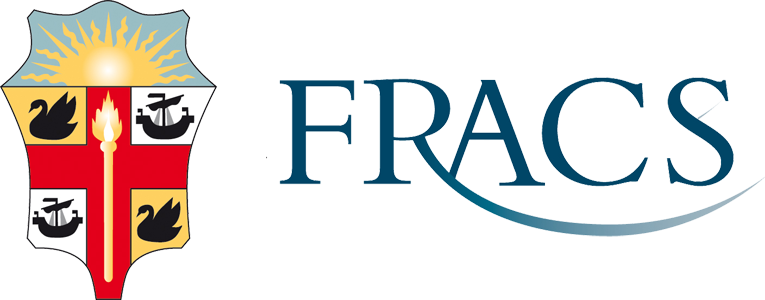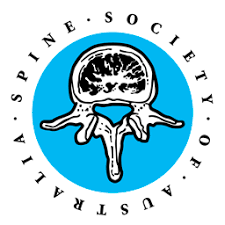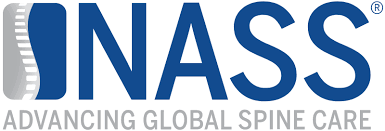Anterior Cervical Discectomy Fusion
Anterior Cervical Discectomy Fusion (ACDF) is a surgical procedure to relieve symptoms caused by a herniated or degenerative disc in the cervical spine (neck). It involves removing the damaged disc or discs from the front (anterior) of the neck and fusing the adjacent vertebrae to provide stability.
Who is Suitable for Anterior Cervical Discectomy Fusion?
Not everyone with neck pain or a herniated disc is suitable for ACDF. Typically, ACDF is recommended for individuals with persistent symptoms who do not respond to conservative treatments such as medication, physical therapy, injections or rest. Suitable candidates for ACDF may experience the following:
- Neck pain and stiffness
- Arm pain, numbness, or weakness
- Difficulty gripping or weakness in the hands
- Radiating pain down the shoulder or into the fingers
- Difficulty with coordination or balance
- Headaches and Neck Spasms
Benefits of Anterior Cervical Discectomy Fusion
The benefits of ACDF include
- Relief of symptoms: ACDF can alleviate pain, numbness, tingling, and weakness in the neck, shoulders, arms, and hands caused by nerve compression due to herniated or degenerative discs.
- Improved function: By removing the diseased disc and restoring stability to the cervical spine, ACDF can improve neck mobility and restore normal function in the affected areas.
- Spinal stability: Fusion of the vertebrae provides stability to the cervical spine, reducing the risk of further disc herniation or abnormal movement between the vertebrae.
- Quick recovery: ACDF is considered a relatively safe and effective procedure with a shorter recovery time than other spine surgeries. Many patients experience significant relief from symptoms and can resume their daily activities within a few weeks.
- High success rates: ACDF has shown high success rates in providing long-term pain relief and improving the quality of life for patients with appropriate indications.
Alternative Options to Anterior Cervical Discectomy Fusion
- Conservative treatments: Non-surgical options such as physical therapy, pain medications, anti-inflammatory drugs, epidural steroid injections, and activity modification may be attempted initially to relieve symptoms. These options are typically recommended if the symptoms are mild or the individual prefers a non-surgical approach.
- Posterior cervical decompression: In some cases, a posterior approach may be used instead of the anterior approach. This involves removing the lamina from the back of the neck, allowing more space for the spinal cord rather than decompressing the front. This option is considered when the pathology is more posterior in location or when there are specific indications for a posterior approach.
- Artificial disc replacement: Instead of fusion, an artificial disc can be inserted between the vertebrae to maintain motion and flexibility in the cervical spine. This option preserves the range of motion but may not be suitable for all patients, depending on factors such as the extent of disc damage, spinal stability, and other considerations.
Anterior Cervical Discectomy Fusion Procedure
The following steps typically occur during an Anterior Cervical Discectomy Fusion (ACDF).
- Anaesthesia: You will be given anaesthesia to ensure you are comfortable and pain-free during the procedure.
- Positioning: Your surgeon and the theatre team will position you on the surgical table. Sometimes, this includes taping down your head, chin and arms.
- Incision: A small incision is made in the front of your neck, usually along a natural skin crease. The incision length depends on the number of levels to be treated.
- Soft tissue retraction: The surgeon carefully moves the muscles, blood vessels, nerves and soft tissues aside to access the cervical spine.
- Discectomy: The surgeon removes the damaged disc or discs causing the symptoms. Special instruments and magnification may be used to ensure precise removal.
- Spinal decompression: If necessary, the surgeon may perform additional procedures to relieve pressure on the spinal cord or nerve roots.
- Fusion: To restore stability to the spine, a bone graft or an artificial spacer is inserted between the adjacent vertebrae. The bone graft may be taken from your own body (autograft) or a donor (allograft). A plate and screws are then used to ensure spine stability during fusion.
- Closure: The incision is closed with sutures or staples, a drain may be placed, and a sterile dressing is applied.
- Recovery: After the surgery, you will be moved to a recovery area, where you will be monitored until the anaesthesia wears off. You will then be transferred to a hospital room before being discharged home between 1-3 days later.
Anterior Cervical Discectomy Fusion Recovery Plan
After an ACDF, here's what you can generally expect during the recovery period:
- Pain management: You may experience some discomfort or pain at the surgical site, which can be managed with pain medications prescribed by your surgeon. It's important to take the medications as directed and report any severe or worsening pain to your surgeon.
- Neck immobilisation: Rarely, you may be required to wear a cervical collar or brace after the surgery to support your neck and promote healing. The duration of collar use varies depending on the surgeon's recommendation and your progress.
- Physical activity and restrictions: Initially, you will be advised to restrict activities that strain your neck, such as heavy lifting, bending, or twisting. Gradually, you will be allowed to increase your activity level under the guidance of your surgeon or physical therapist.
- Physical therapy: Physios will see you on the first postoperative day to aid your recovery. Physical therapy exercises can help improve neck strength, flexibility, and overall function.
- Follow-up appointments: You will have scheduled follow-up appointments with your surgeon to monitor your progress and address any concerns or complications that may arise during the recovery period. Your surgeon will determine the frequency of these visits based on your needs.
- Return to work and daily activities: Your surgeon will provide specific guidance regarding when it is safe to resume activities based on your progress.
- Fusion and healing: The fusion process takes 3-6 months. During this time, the bone graft or artificial spacer placed during the surgery gradually fuses the adjacent vertebrae. Your surgeon will monitor the fusion progress through follow-up imaging studies, such as X-rays or CT scans. Other tissues, particularly nerves, can take up to 2 years to recover.
Anterior Cervical Discectomy Fusion Prognosis
ACDF has generally positive prognosis and success rates. The procedure often relieves symptoms associated with cervical disc herniation or degenerative disc disease.
Here are some factors that can influence the prognosis:
- The prognosis may be better for individuals with milder symptoms or less severe disc damage than those with more advanced conditions. Early intervention and treatment can lead to improved outcomes.
- Younger individuals and those in good overall health typically have a better prognosis.
- Smoking, obesity, and chronic medical conditions can affect healing and outcomes.
- Adhering to the recommended postoperative care, including wearing the cervical collar, attending physical therapy, and following activity restrictions, can contribute to a more successful outcome.
- As prescribed, physical therapy exercises can help restore strength, flexibility, and range of motion in the neck and aid recovery.
Anterior Cervical Discectomy Fusion Risks
As with any surgical procedure, there are potential risks and complications associated with ACDF.
- Complications related to anaesthesia
- Damage to the oesophagus (food tube) or trachea (windpipe)
- Bleeding
- Nerve or spinal cord injury
- Extension of surgery due to poor bone quality
- Difficulty swallowing or speaking
- Failure of fusion
- Infection
- Adjacent segment disease
What if ACDF is Delayed?
If ACDF is delayed, the symptoms and condition necessitating the surgery may persist or worsen. Delayed surgery can lead to prolonged pain, progressive neurological symptoms, and potential complications. Follow your surgeon's guidance and undergo surgery promptly if it is recommended based on your condition and symptoms. However, the decision to proceed with surgery should be made after careful consideration and discussion with your qualified spinal surgeon, considering individual circumstances and potential risks.
Contact Us
Hours
Monday to Friday
9.00am – 5.00pm
*This may vary on occasions or the rooms may be briefly unattended.
All Rights Reserved | Greg Malham, Neurosurgeon, BSc MBChB DMed FRACS



